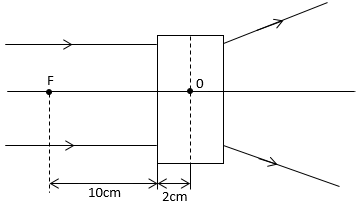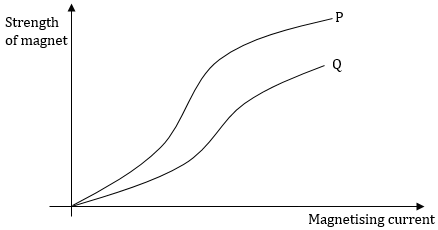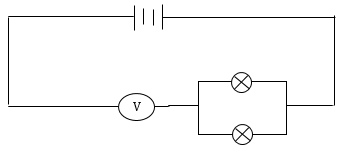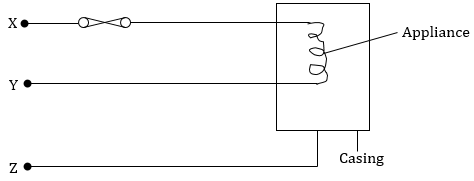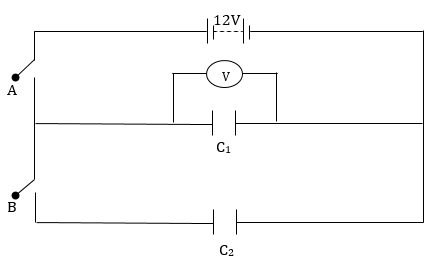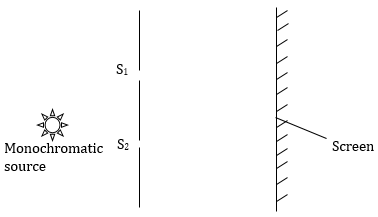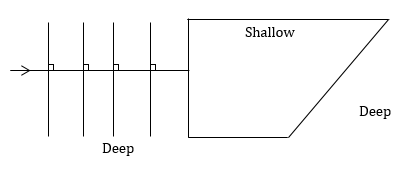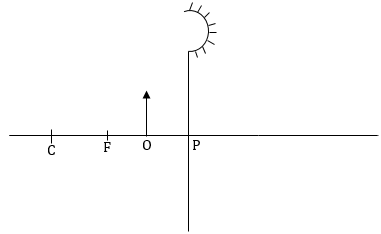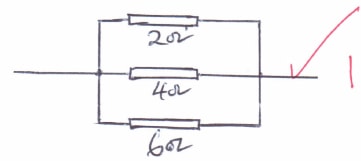232/2
PHYSICS
PAPER 2
TIME: 2 HOURS
Instructions to candidates
- This paper consists of two sections A and B.
- Answer all the questions in the two sections in the spaces provided after each question
- All working must be clearly shown.
- Electronic calculators, mathematical tables may be used.
- All numerical answers should be expressed in the decimal notations

QUESTIONS
SECTION A: (25 MARKS)
- Explain why repulsion method is the best test for polarity of a magnet as opposed to attraction. (1 mark)
- Define the following;
- the direction of an electric field. (1 mark)
- the capacitance of a capacitor. (1 mark)
- The diagram below shows a set of parallel rays of light incident on a thin lens and emerging out from the lens. The lens is placed inside a blackbox with narrow opening on both sides.
State the type of the lens in the box and explain your answer. (2 marks) - In an experiment to magnetize two substances P and Q using electric currents, two curves were obtained as shown below.
- Explain the difference between substances P and Q with reference to domain theory. (1 mark)
- State and explain which of the two substances in (i) above would be suitable for use as a core of an electromagnet. (1 mark)
- The letters in the figure below represents different types of radiations in the electromagnetic spectrum.
- Which colours of spectrum appears at P and Q?
P - …………………………………………… (1 mark)
Q - …………………………………………… (1 mark) - How is radiation marked C detected? (1 mark)
- Which colours of spectrum appears at P and Q?
- The diagram below shows a circuit that was connected by a form one student. Comment with a reason on the brightness of the bulbs. (2 marks)
- A car battery requires topping up with distilled water occasionally. Explain why this is necessary and why distilled water is used. (2 marks)
- The figure below shows the wiring in a modern mains appliance.
Identify the wires X, Y and Z. (2 marks)
X - …………………………………………………………………………………………………………
Y - …………………………………………………………………………………………………………
Z - ………………………………………………………………………………………………………… - Three resistors of resistance 2.0Ω, 4.0Ω and 6.0Ω are connected together in a circuit. Draw a circuit diagram to show the arrangement to the resistors which gives;
- An effective resistance of 3.0Ω (2 marks)
- A minimum resistance. (1 mark)
- When rod X was rubbed with material Y, it was observed that the material acquired a negative charge.
- State the charge on the rod X. (1 mark)
- Explain how the rod X acquired the charge. (1 mark)
- Explain briefly how you would test the nature of the charge on rod X using an electroscope. (2 marks)
- Distinguish between intrinsic semi-conductor and extrinsic semiconductor. (2 marks)
SECTION B: (55 MARKS)
- The following figure shows a circuit where a battery of an e.m.f. 12v, switches A and B, two capacitors C1 = 9.0μF and C2 = 3.0μF and a voltmeter connected as shown below.
- Determine the charge on C1 when the switch A is closed and B open. (2 marks)
- What is the voltmeter reading when switch A is closed and switch B open? (Assume capacitor C1 is fully charged). (1 mark)
Switch A is now opened and switch B closed. Determine: - The effective capacitance of C1 and C2. (2 marks)
- The voltmeter reacing V. (3 marks)
- The energy stored by C1 (2 marks)
-
- In an experiment to study one of the properties of waves, a double slit was placed close to the source of monochromatic light as shown below.
- What property of waves is being investigated? (1 mark)
- State the function of the double slit. (1 mark)
- State and explain the observation made on the screen. (2 marks)
- State what is observed on the screen when;
- the slit separation S1 S2 is decreased. (1 mark)
- White source of light is used in place of monochromatic source. (1 mark)
- S1 and S2 are made larger. (1 mark)
- The diagram below shows plane wave fronts in a ripple tank incident on a boundary between a deep to shallow region.
On the same diagram, sketch the wave pattern in and beyond the shallow region. (2 marks) - The equation below represents a nuclear decay. (1 mark)
Identify the radiation A.
- In an experiment to study one of the properties of waves, a double slit was placed close to the source of monochromatic light as shown below.
-
- The diagram below shows an object O placed infront of a concave mirror as shown.
- Complete the diagram to show the image formed. (2 marks)
- State two characteristics of the image formed. (1 mark)
-
- State two factors that determine the speed by which electrons are emitted from metal surface by light falling on it. (2 marks)
- In an experiment using a photocell, light of varying frequency but constant intensity was shone onto the surface of a metal. The maximum kinetic energy, (Ke)max emitted for each frequency, was determined. The graph below shows how Kemax varies with frequency f.
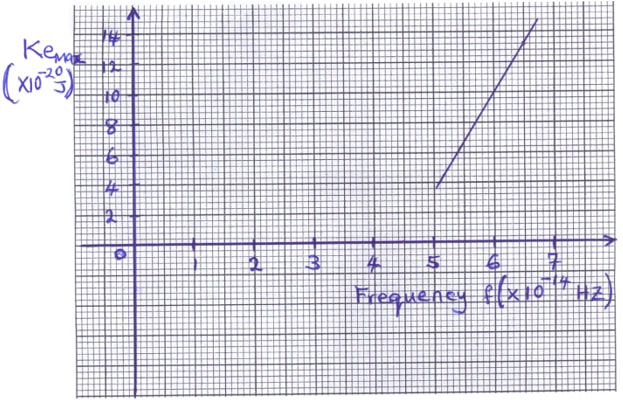
From Einstein’s equation, hf = Ɵ + Kemax, where Ɵ is the work function. Determine.- the threshold frequency, f0 from the graph (1 mark)
- the planks constant, h (2 marks)
- The diagram below shows an object O placed infront of a concave mirror as shown.
-
- An electric cooker has an oven rated 3KW, a grill rated 2KW and two rings each rated at 500W. The cooker operates from 240V mains. What is the cost of operating all the parts for 30 minutes if electricity cost Ksh.6.50 per unit? (3 marks)
- Fig. below shows identical copper coils A and B placed close to each other. Coil A is connected to a d.c. power supply while coil B is connected to a galvanometer.
- State and explain what is observed on the galvanometer when the switch is closed. (2 marks)
- State what is observed on the galvanometer when the switch is opened. (1 mark)
- State what would be observed if the number of turns of coil B is doubled. (1 mark)
- A transformer with 2000 turns in the primary circuit and 150 turns in the secondary circuit has a primary circuit connected to a 800V ac source. It is found that when a heater is connected to the secondary circuit, it produces heat at the rate of 1000w. Assuming 90% efficiency, determine the;
- Voltage in the secondary circuit. (2 marks)
- the current in the primary circuit. (2 marks)
- Current in the secondary circuit (1 mark)
- A cell drives a current of 5A through a 1.6Ω resistor. When connected to a 2.8Ω resistor, the current that flows is 3.2A. Determine the e.m.f. (E) and internal resistance (r) of the cell. (4 marks)
-
- State how each of the following can be increased in an x-ray tube.
- Intensity of x-rays. (1 mark)
- penetrating power of x-rays. (1 mark)
- An x-ray tube has an electron beam current of 10mA and is accelerated through a p.d of 60KV. The efficiency is 0.5%. Calculate;
- the input power (2 marks)
- the quantity of heat produced per second. (1 mark)
- the number of electrons hitting the target per second. (2 marks)
- The fig. below shows an a.c. signal on the C.R.O screen.
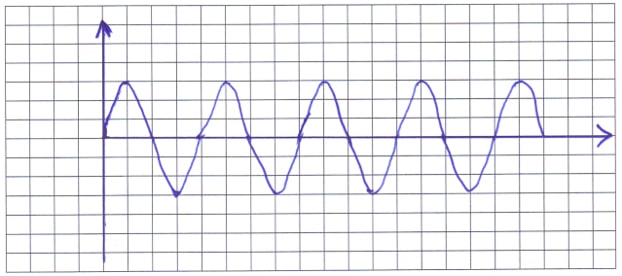
Determine:- The frequency of the signal given that the time base is set at 10ms/div. (2 marks)
- The peak voltage of the signal given that the y-gain is set at 50v/div (2 marks)
- State how each of the following can be increased in an x-ray tube.

MARKING SCHEME
- Repulsion occurs only between like poles. Attraction occurs between unlike poles and also between a magnet and a magnetic material
-
- The path followed freely by a free +ve charge
- Charge stored per unit volt (C= Q/V)
- Concave lens
- Rays parallel and close to the principal axis appear to diverge from the principal focus when refracted. -
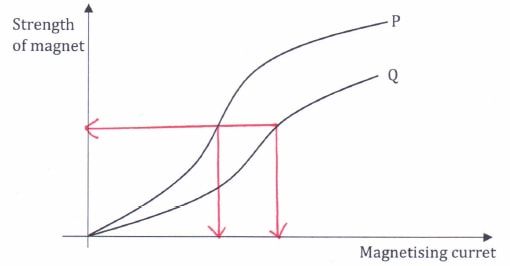
- Dipoles in P align easily (easily magnetised) than those in Q (i.e. P is easily magnetised than Q)
TOo magnetise them to the same strength, P requires less current than Q - P - it s easily magnetised than Q or
- It is magnetically soft
- Dipoles in P align easily (easily magnetised) than those in Q (i.e. P is easily magnetised than Q)
-
- P - red, Q - violet
- Thermopile, bolometer, ckin thermometer with blackened bulbs
- The bulbs do not light. no current flow since the voltmeter is wrongly connected. The voltmeter should be out of the circuit not in the circuit i.e it should be connected across the device whose voltage is to be determined
- - Replace water lost due to evaporation when the cell is working
- Distilled water is used since it doesn't have ions that can react with the acid to form insoluble compounds - X - Live wire
Y- Neutral wire
Z - Earth wire -
-
-
- Positive charge
- During rubbing electrons were transferred from rod X to the material
- - Charge the electroscope +vely
- Bring the rod close to the cap of the electroscope
- Lok for an increase in the divergence of the leaf. This will confirm that X is +vely charged
- Intrinsic semi-conductor is a pure semiconductor while extrinsic semi-conductor is an intrinsic semi-conductor that has been doped i.e impurity has been added to improve conductivity
-
- Q1 = C1V = 9 × 10-6 × 12 = 1.08 × 10-4 C
- V = 12 V when fully charged
- CE = 9 + 3 = 12 μF
- V = Q/C
= 1.08 × 10-4
12 × 10-6
= 9 V
Or
V = Q/C
= 108μC
12μF
= 9 V - E1 = 1/2CV2 = 1/2 × 9 × 10-6 × 92
= 3.645 × 10-4 J
-
-
- Interference of light
- Acts as a coherent source of light
- - Alternate bright and dark fringes are seen on the screen
- Bright fringes are points where constructive interference occurs i.e. crest from one source meets a crest from the other source and where a crest from one meets a trough from the other, destructive interference occurs representing dark fringes -
- Separation of fringes increase
- Central fringe is white, fringes on either side are coloured
- No fringe and therefore no interference
-
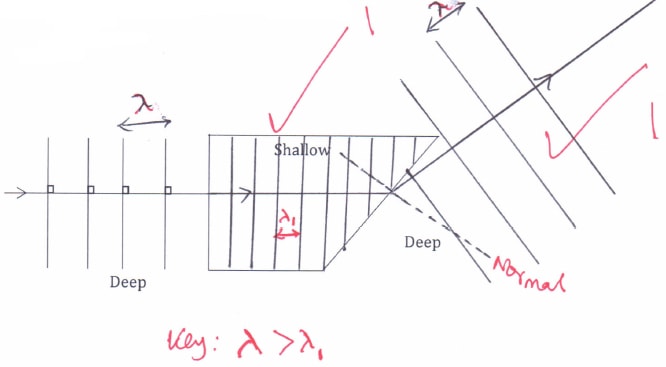
-
-
-
-
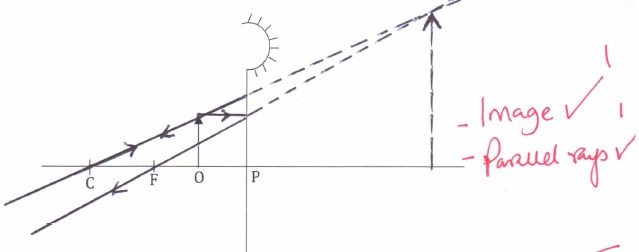
- Virtual, upright, magnified, behind the mirror
-
-
- - Frequency pf incident radiation/wavelength
- Work function of the metal surface/ type of metal -
- 4.45 × 1014 Hz
- h = (13.2 − 0) × 10-20 = 6.439 × 10-34Js
(6.5 − 4.45) × 1014
- - Frequency pf incident radiation/wavelength
-
-
- Total power = 3kW + 2kW × ((2 × 500)/100) = 6 kW
Total units (kWh) = 6kW × 30/60 hr = 2kWh
if 1 Unit = sh 6.50
∴ 2 units = ?
= 2 × 6.50 = Ksh 13.00 -
- - The galvanometer shows a deflection in one direction then returns to zero mark
Closing the swithc causes a change in the magnetic flux in the primary coil which links with secondary coil, inducing an emf and current in secondary coil. Both emf and current lasts for only a short time because as long as the switch is closed, the magnetic flux in the primary coil remains constant. - The pointer will deflect in the opposite direction and then returns to zero mark
- he pointer will deflect more
- - The galvanometer shows a deflection in one direction then returns to zero mark
- Vs = Ns ⇒ Vs = 150 × 800 = 60V
Vp Np 2000 - Pp = Ps/0.9 = 1000/0.9 = 1111.1 W
Ip = 1111.1/800 = 1.389A
or
n = Po/PI
90/100 = IsVs/IpVp
0.9 = 1000
Ip × 800
Ip = 1000
0.9 × 800
= 1.389A - Po = IsVs
1000 = Is × 60
Is = 1000/60 = 16.67 A
- Vs = Ns ⇒ Vs = 150 × 800 = 60V
- E = I(R+r)
E = 5(1.6+r) -------(i)
E = 3.2 (2.8+r) ----(ii)
5(1.6+r) = 3.2(2.8+r)
8+5r = 8.96 + 3.2r
1.8r = 0.96
r = 0.96/1.8
- Total power = 3kW + 2kW × ((2 × 500)/100) = 6 kW
-
-
- Increasing the heating current
- Increasing the anode voltage
Increasing speed of electrons
-
- P = Ir = 10 × 10-3 × 60 × 103 = 600W
- H = 99.5/100 × 600 = 597 W
- n = Q/e = It/e = 10 × 10-3
1.6 × 10-19
= 6.25 × 1016 electrons
-
- f = 1/T
= 1
4 × 10 × 10-3
= 100/4 = 25 Hz - Vo = 3 × 50 = 150 V
- f = 1/T
-
Download Physics Paper 2 Questions and Answers - Kassu Jet Joint Exams 2020/2021.
Tap Here to Download for 50/-
Get on WhatsApp for 50/-
Why download?
- ✔ To read offline at any time.
- ✔ To Print at your convenience
- ✔ Share Easily with Friends / Students

